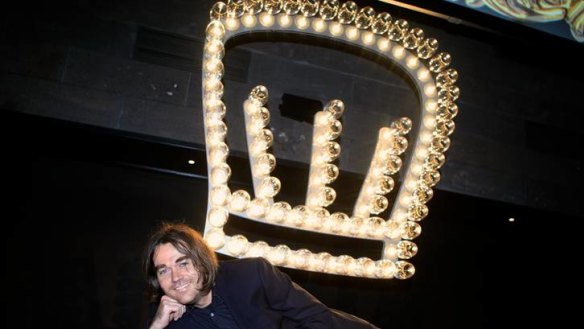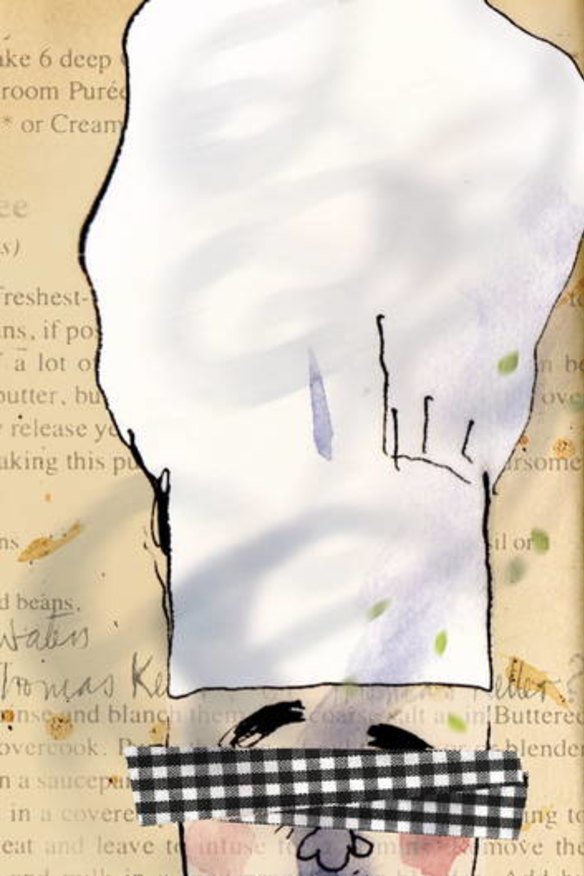Hats off
Lucinda Schmidt asks the Guide's editors, what do the hats really mean?

HOW THE HATS ARE AWARDED
The Age Good Food Guide 2013, published in August 2012, is the 33rd edition, and the fourth edited by Janne Apelgren. To finalise the more than 600 Victorian restaurants listed in the guide (including 75 with hats), she used a team of 66 reviewers to eat 1100 meals, all paid for.
The restaurants are not told they are being reviewed (reviewers do not book under their own name and some even have credit cards and mobile phones under different names).
In addition, Apelgren weighed up information from the 20 or so restaurant reviews published across Fairfax titles each week, and from emails from the reviewing team about their other dining experiences during the year. "Hatted restaurants are given to very experienced reviewers who eat out a lot," she says.
The senior reviewing panel, this year comprising Apelgren, Larissa Dubecki, Dani Valent, Richard Cornish and Michael Harden, met several times to go through all the restaurants scoring 14/20 or more and to benchmark across various cuisine styles. If required - particularly when hats are at stake or a new restaurant scores above 14 - restaurants are revisited by a different reviewer, usually a panel member. (This year, one restaurant was visited five times before losing a hat in the 2013 guide.)
"We try very hard to be fair and we try very hard to be thorough," Apelgren says. "Every review goes through me, a sub-editor, a check sub-editor and a fact-checker. And we also send a questionnaire to every restaurant (asking for details such as opening hours, credit cards accepted and copies of the menus)."
The final version is checked by two proofreaders with food and wine subject expertise, including a former guide editor. Apelgren - and others interviewed - say the hardest jump is from one to two hats. But a score of 14.5 (half a point below a hat) is also difficult. "There are a lot of really good restaurants at 14 or 14.5," she says. "Going from one hat back to 14.5 is always hard, I'm very conscious of that. The panel votes and discusses and sometimes argues, but pretty often it's unanimous. And I'm always happy to talk to people about why they lost a hat or why they didn't get a hat."
Assisting her in those sometimes awkward conversations are extensive notes from the reviewer justifying their score, but not appearing in the review. An example: one reviewer was served rancid olive oil with their bread.
And Apelgren's own notes of a visit to a five-star hotel restaurant that last year lost its hat records a wait of more than six minutes to be greeted, a 25-minute wait for the bill and a similar crumb garnish on three different dishes.
She also fields questions from those who want to increase their score. This year, the diligent manager of a top Melbourne hotel rang Apelgren before he ordered new restaurant staff uniforms, to check if jackets, collar and tie were required for a hatted restaurant. (No. Check out the casual attire of the staff at the two-hatted MoVida tapas bar.)
"The bar (for hats) gets raised every year," Apelgren says. "Food and service, the whole experience improves." For the 2013 guide, Italian food, in particular, got better (think Lupino and Mister Bianco).
And the 2012 guide showed a lift in modern Asian food, with the arrival of restaurants such as Golden Fields and Dandelion (both of which went straight to one hat, and retained them for 2013).
SOME BIG CALLS

Janne Apelgren, The Age Good Food Guide editor, 2010 edition - present
Upgrading Attica and the Royal Mail Hotel from two to three hats in the 2012 edition, so that they joined Jacques Reymond and Vue de Monde. (All four retained their three hats in the 2013 edition.) Apelgren describes the decision, taken in mid 2011, as "quite a leap of faith" at the time. Attica chef Ben Shewry says the call on three hats came, in his view, at the right time, after Attica had improved its wine list and its front-of-house service. "Chefs can forget it's not just about the food," he says.
John Lethlean The Age Good Food Guide co-editor, 2007-2009 editions
Downgrading Vue de Monde to two hats in the 2008 guide after it scored three hats and 19/20 in the previous guide and was awarded restaurant of the year.
Lethlean describes the decision as controversial but not necessarily tough. "It was one of those restaurants that polarised opinions. It had fanatical followers and fanatical detractors, so there were always going to be some people happy with the decision."
Rita Erlich The Age Good Food Guide co-editor, 1983-1998
Downgrading an iconic eastern suburbs restaurant to two hats in the early 1990s. Erlich says people had been grumbling about the restaurant for 18 months but it was still a tough call and the resulting rage was considerable. "A number of people wouldn't speak to me," she says. "But years later, someone who worked there at the time confided, 'Gosh, that must have been a tough call, but you were quite right'. There is no past tense in restaurants. A hat given or taken away 20 years ago is still felt."
WHAT THE HATS MEAN
1 hat
15/20: Very good, consistently notable
2 hats
16/20: Great, worth seeking out 17/20: Excellent, one of the best
3 hats
18/20: Outstanding
19/20: Brilliant
20/20: The best of the best
Restaurant reviews, news and the hottest openings served to your inbox.
Sign up